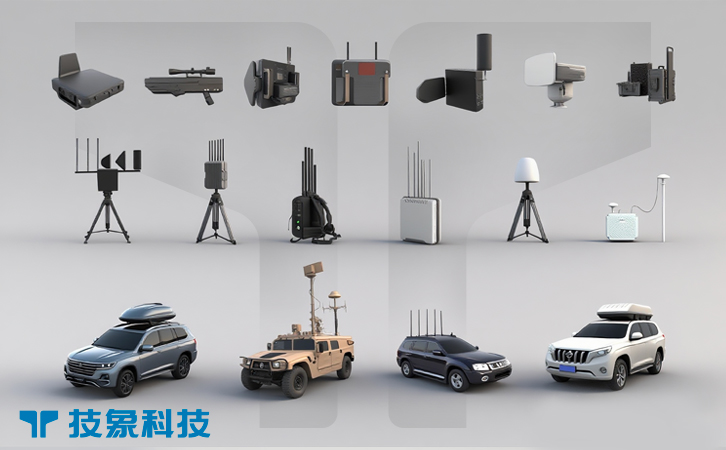The drone landscape in 2025, with over 6 million UAVs in operation worldwide, has heightened the need for immediate, physical countermeasures against rogue threats that evade electronic defenses. Net guns and launchers, kinetic tools that fire nets or projectiles to ensnare and capture drones, provide a direct, non-lethal solution for neutralization. These handheld or mounted devices allow security teams to physically immobilize UAVs, enabling safe recovery for forensic analysis while minimizing risks in populated areas like stadiums or airports. Unlike jamming or lasers, which may fail against autonomous drones, kinetic capture ensures tangible control, making it essential for law enforcement, event security, and border patrols. This article explores the proliferating drone threat, the mechanics of net guns and launchers, their real-world applications, and the challenges and future potential of this hands-on counter-UAV system.
I. The Proliferating Drone Threat and Need for Kinetic Capture
Rogue drones have proliferated as a security concern, with incidents exceeding 2,500 globally in 2024, including smuggling attempts at prisons and disruptions at major events that have led to evacuations and losses in the millions. In military scenarios like Ukraine, agile UAVs—often costing under $5,000—conduct surprise attacks or reconnaissance, outpacing static defenses and exploiting autonomy to avoid electronic countermeasures. Civilian risks involve unauthorized filming or payload delivery, where drones maneuver in cluttered or low-visibility environments to evade detection.
Traditional solutions like RF jamming fail against RF-silent autonomous drones, while lasers require line-of-sight and power infrastructure. Kinetic capture tools address these gaps by physically ensnaring drones, offering a reliable method for immediate neutralization and evidence collection. Their role is crucial in high-stakes settings, as seen in 2025 U.S. border operations where captured drones revealed smuggling networks. The DEFENSE Act, enacted in September 2025, supports kinetic tools for civilian use at critical sites, emphasizing their importance in providing hands-on defense against the speed, stealth, and autonomy of modern drone threats.
II. Mechanics of Net Guns and Launchers
Net guns and launchers operate by propelling a net or weighted projectile to entangle a drone’s propellers, causing it to lose lift and fall safely. Handheld models, like SkyWall’s net gun, use compressed gas to fire a net up to 100 meters, expanding to capture drones mid-flight, often with parachutes for controlled descent. Launchers mounted on drones or vehicles, such as Fortem’s DroneHunter, pursue targets and deploy nets at ranges up to 500 meters, using AI for precise aiming.
The mechanics involve detection—via integrated sights, cameras, or linked sensors—to target the drone, followed by launch. Nets, made from durable materials like Kevlar, wrap around rotors to disable flight without destruction. Advantages include immediate results, effectiveness against autonomous UAVs, and forensic recovery for tracing operators. Limitations include short ranges, wind sensitivity, and potential debris if unmitigated. In 2025, advancements in lightweight nets and AI-guided launchers have improved accuracy, making these tools a key component of tactical C-UAS kits for rapid, physical intervention.
III. Applications and Real-World Deployments
Net guns and launchers are deployed in varied scenarios, offering hands-on neutralization where mobility is essential. In civilian applications, stadiums like those hosting the 2025 Super Bowl use handheld net guns to capture drones attempting overhead filming, preventing disruptions without evacuation. Airports equip response teams with launchers to ensnare intruding UAVs, as in 2025 UK tests where systems safely recovered drones near runways. Prisons leverage these tools to counter smuggling, with facilities reporting a 45% drop in contraband incidents since 2024.
In military applications, launchers provide forward-deployed defense. The U.S. Army’s 2025 Middle East exercises featured drone-mounted launchers neutralizing reconnaissance UAVs during patrols, enhancing troop safety. Border security operations, like those by EU forces, use net guns to intercept smuggling drones in rugged terrains, enabling analysis of captured payloads. The Counter UAS Technology USA Conference in December 2025 showcased these deployments, emphasizing hybrid kinetic systems for layered defense. Success depends on accurate targeting and operator skill, but their physical approach makes them indispensable for scenarios requiring evidence preservation.
IV. Challenges and Future Prospects
Net guns and launchers face operational, safety, and regulatory challenges. Short ranges limit use against high-altitude drones, requiring integration with long-range detection like radar. Wind or obstacles can divert nets, while falling drones pose debris risks, necessitating parachutes. Costs, starting at $10,000 for handheld units, can escalate for drone-mounted versions, straining budgets for smaller agencies.
Regulatory issues include FAA restrictions on launches in controlled airspaces to avoid manned aircraft collisions, though the September 2025 DEFENSE Act eases permissions for security use. Ethical concerns involve potential misuse against legitimate drones or bystanders, requiring strict protocols. International standards, like ITU guidelines for related RF components, mandate safe deployment. Future prospects are promising, with 2025 innovations in biodegradable nets and AI-aimed launchers enhancing precision. By 2030, the counter-UAS market is expected to grow, with kinetic tools leading for tactical capture. Policy support and safety refinements will ensure responsible use, positioning net guns and launchers as a cornerstone of hands-on aerial defense.
Conclusion
Net guns and launchers offer a direct, kinetic solution for capturing rogue drones, providing immediate neutralization in 2025’s unpredictable threats. Their ability to ensnare and recover UAVs makes them ideal for stadiums, airports, and patrols, complementing electronic C-UAS tools. Despite challenges like range and regulations, real-world successes and emerging innovations highlight their potential. As drone threats advance, these tools—supported by policy reforms—will remain vital in layered defenses. By overcoming hurdles, stakeholders can equip responders with this technology, ensuring swift, evidence-based protection in a drone-filled world.



